With so much information – and misinformation – about search engine optimization out there, it can be surprisingly difficult to sift through it all and figure out what actually matters to your page rankings. Especially nowadays with AI overviews crushing CTRs - do people even use Google anymore to find anything?
And while guidelines for factors like post length and backlinks may vary, one thing is for certain: good information architecture (IA) is actually the most important part of any SEO strategy.
But what makes information architecture good versus bad?
Why does reducing crawl depth matter?
We’re going to take you through everything you need to know to up your organic search traffic – brought to you by three decades of experience in marketing, e-commerce, finance, strategy, and growth.
Here’s a sneak peek at what’s on the docket:
- Building websites that are people-friendly and bot-friendly
- The SEO impact of sub-par information architecture
- Information architecture + user experience

Website Architecture That’s Bot-Friendly and User-Friendly
Your website’s IA impacts several ranking factors, but crawl depth is particularly important. Not only does it impact how fast bots can crawl and index your new content, it also affects the user experience of your site.
Crawl Depth: Using the shortest path possible, how many pages a search engine bot needs to access in order to get from the home page to a specific page on the website.
Luckily, there are a few simple strategies to improve information architecture and reduce crawl depth that can have a profound impact on your site’s SEO.
Display More Posts on Your Blog Page
Internal links play a key role in reducing the number of pages bots have to crawl to access your content. We’ll dig into this more generally below, but first I want to take a look at the section of a website that is so often its crawl depth bugaboo: the blog.
With hundreds, even thousands, of pages, this part of the site is the crucible that tests an internal linking strategy by fire.
Luckily, if you tag your posts or organize them by category, or even deeper by tag, you’ve got a readymade content cluster at your fingertips.

Not only does including more blog posts on each page – the blog homepage, category pages, even individual posts – make it easy for users to find more content, it reduces crawl depth and improves link equity.
Here’s a quick case study to prove it: with the goal of driving more SEO traffic to their blog posts, marketing agency Contact Studio changed the number of posts displayed on their blog page from 9 to 99.
Just make sure your page still loads fast!
The result? Within 30 days of adding more posts to their blog page, blog traffic increased by 23% – or 7000 extra clicks per month.
Not too bad, right?
But the blog isn’t the only place you can up your internal linking game.
Optimize Your Internal Linking Structure
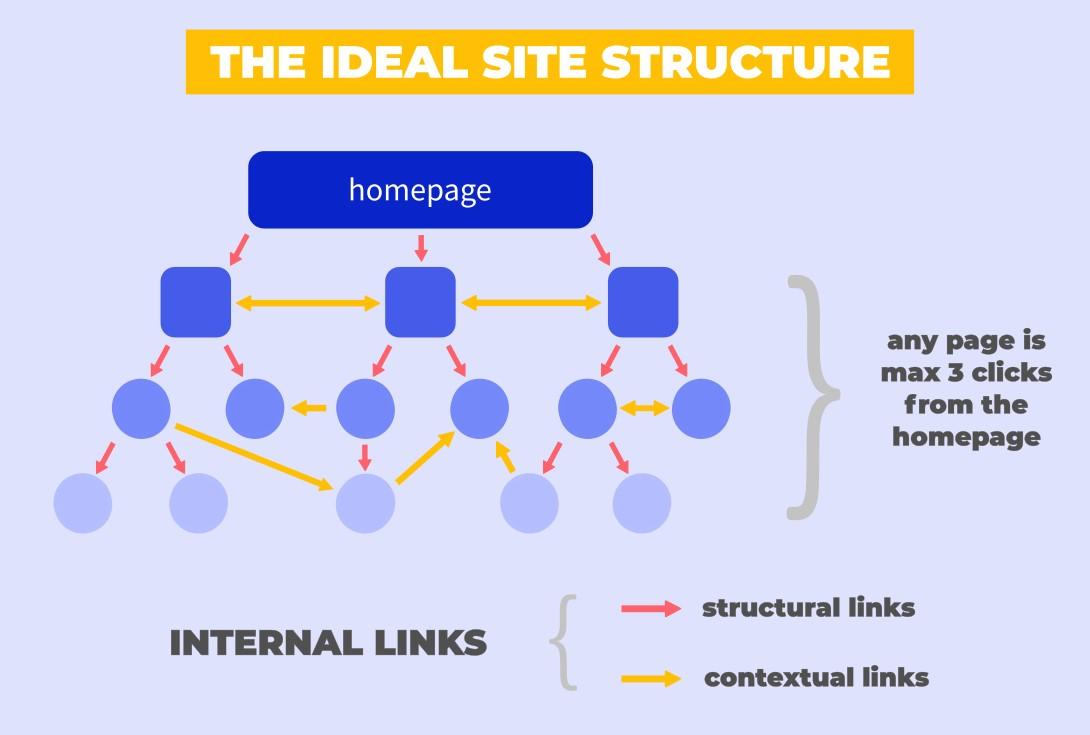
Crawlers sometimes use XML sitemaps to navigate a website, but more often, they use internal links. That’s why optimizing your internal linking strategy is such an important part of SEO. You not only want to optimize is for search engines, but more importantly, optimize it for the user so that it’s actually useful information and causes the user to click by wanting to explore more.
Content Clusters
You’ve probably seen hierarchical information architectures like the one above before – they drill down from the most important page (homepage) to less important pages (categories, posts, etc.). But the content cluster strategy is another internal linking strategy that can give bots an easier way to investigate pieces of content that are related to one another.
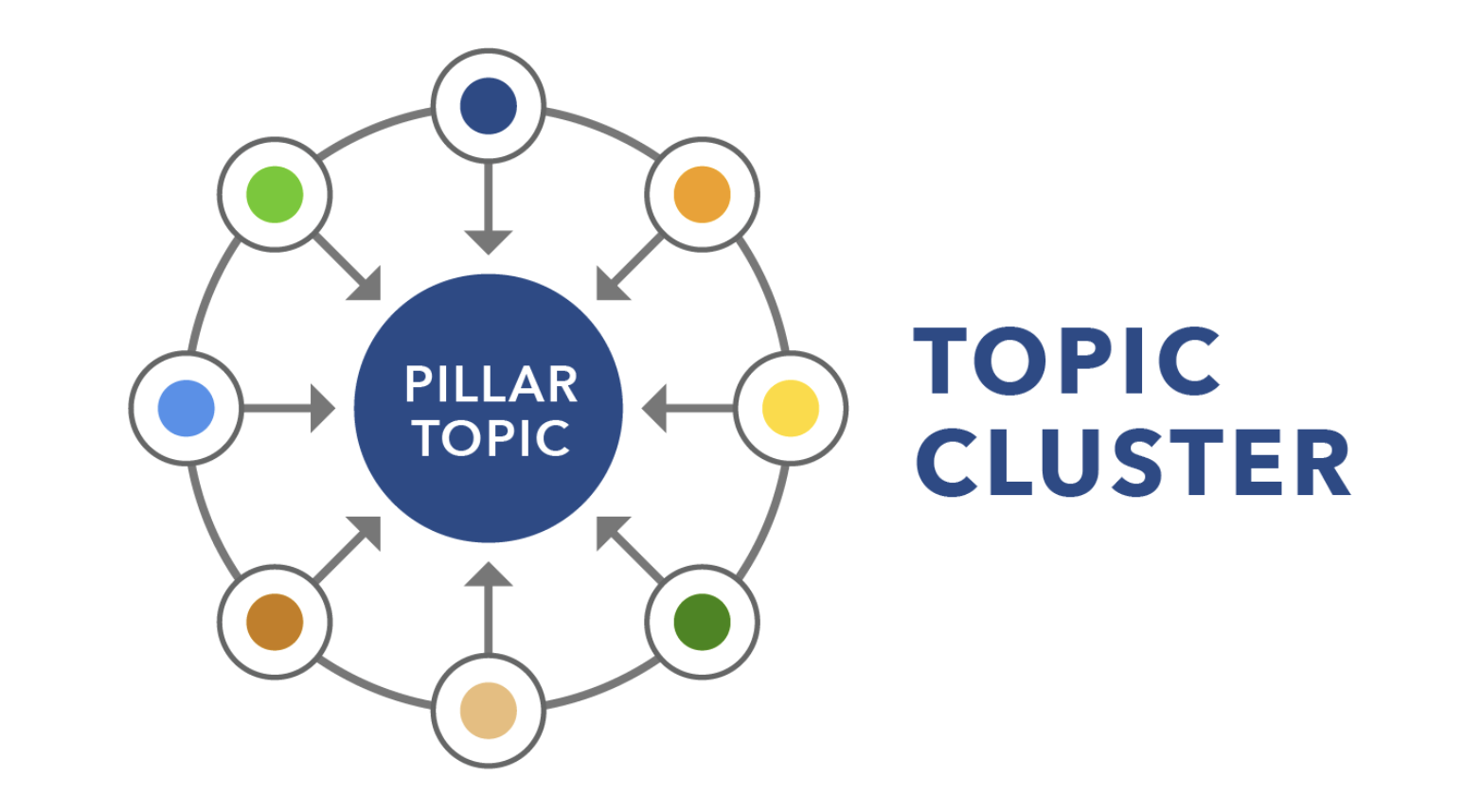
This strategy revolves around creating pillar content – in-depth content that provides a clear, thorough answer to a user question. This is the home base for the cluster.
Cluster content should cover a slightly more niche topic related to the broad topic covered in the pillar piece. It should also link to the pillar piece.
Improve Anchor Text
According to Google’s John Mueller… “We do use internal links to understand the context of the content on your sites.”
According to Hobo Web’s Shaun Anderson after conducting a study on the importance of internal link anchor text… “It seems to me that, YES, Google does look at keyword rich internal anchor text to provide context and relevance signal, on some level, for some queries, at least.”
So give your internal anchor text the same attention you would your external anchor text 👍
Link to Your Important Pages
High value pages are ones that are performing well organically. They’re the pages ranking for more keywords than any of your other pages, the ones getting tons of impressions and clicks.
Are you linking to them?
If not, you should be! Be strategic about your linking strategy, but find ways to link to it from related content.
Create a Sitemap… and Link to It
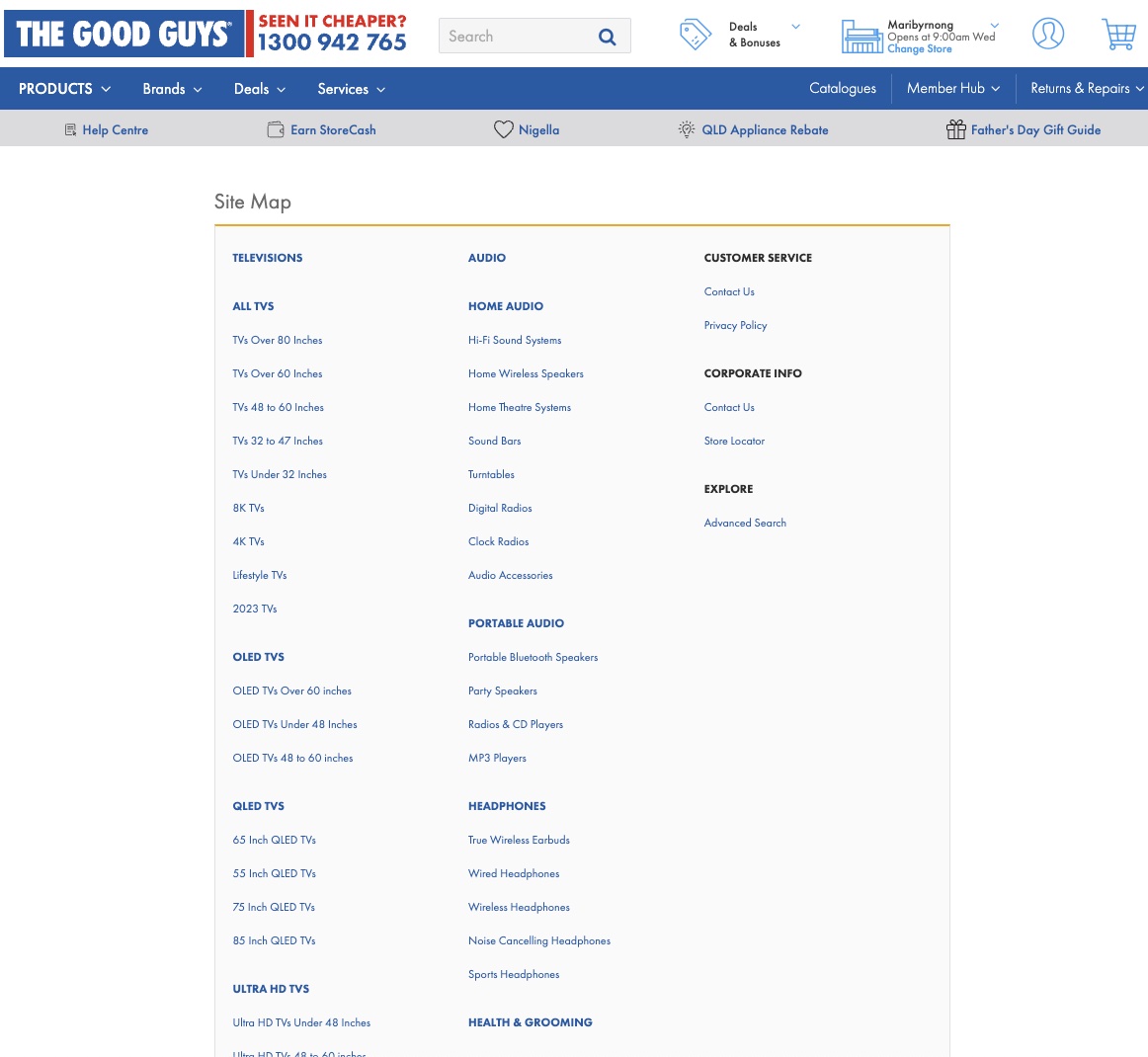
Typically, sitemaps aren’t displayed to users – they’re used for internal planning and SEO. However, including an up-to-date site map can be an effective way to reduce crawl depth. For any page on your website, the crawl becomes:
Home Page > Site Map > Target Page
Giving you an SEO-friendly crawl depth of just two.
Keep in mind that a site map page should be pretty plain – with potentially hundreds of links included, minimizing page load time is a priority.
Since search engines have a crawl limit of 150-250 links per page, you may need to introduce another layer to your information architecture hierarchy in order to make sure all pages are crawled. For example:
Home Page > Site Map > Category Page > Target Page
PS - Don’t Forget About Page Speed
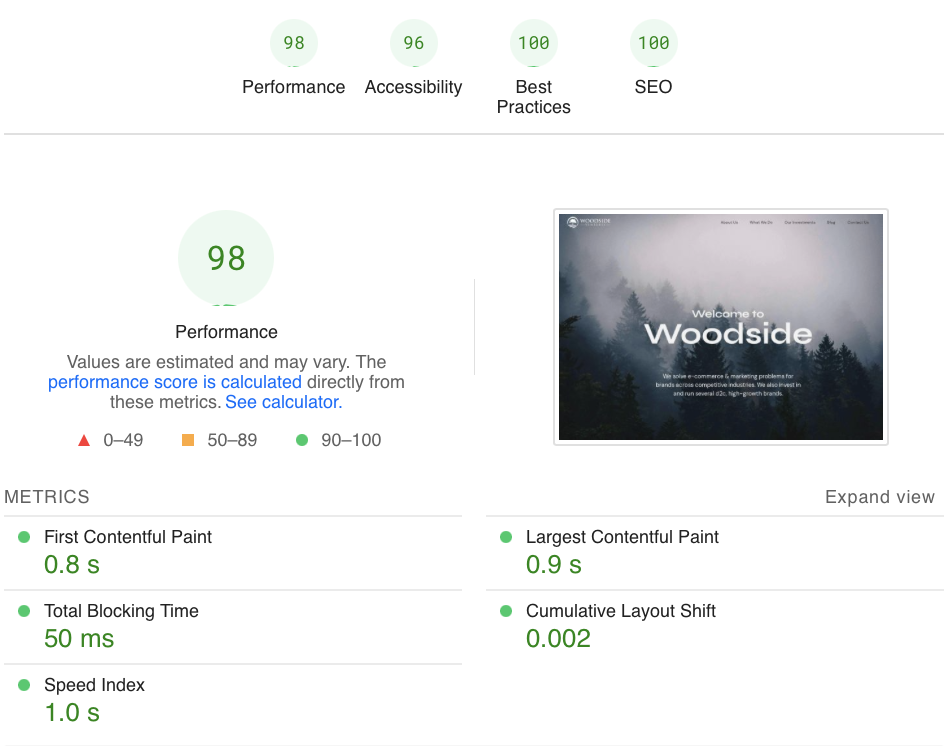
While page speed doesn’t have anything to do with crawl depth, it has everything to do with crawl efficiency.
Page Speed: The average time it takes for a web page to load. Page speed is a long standing, officially recognized Google ranking factor.
Users don’t like it when pages load slowly. In fact, statistics from Google show that as page load times increase, so does the likelihood of a user bouncing – from a 32% increase for a 3 second wait, to a whopping 123% increase for a 10 second wait.
Turns out, crawlers don’t have time to wait around for slow pages either.
Bots have a limited amount of time and resources to dedicate to crawling any given website. This is called the crawl budget. If a website is slow and the bot has to spend more time on each page, then fewer total pages will be crawled each time the bot is on your site.
Why Should We Care About Information Architecture?
On-page SEO is essential, but alone it isn’t enough to keep your site competitive. If you want your pages to rank above the fold in search results, you’ll need to optimize your website from the ground up – starting with technical SEO efforts.
The bigger your site is, the more important its structure is.
Information Architecture: Organizing, structuring, and labeling content in an effective and sustainable way. The goal is to make it easy to find information and complete tasks.
More Efficient Crawling + Indexing = Better Rankings
Clear information architecture also makes it easy for search engine bots to crawl your site and index the information they find. The more information – like text, videos, images, alt text, and attributes like <title> tags – they are able to access and catalog, the better they understand what your pages are about.
Which means they can serve those pages to your audience in Google search results.
Translation? Better search engine rankings.
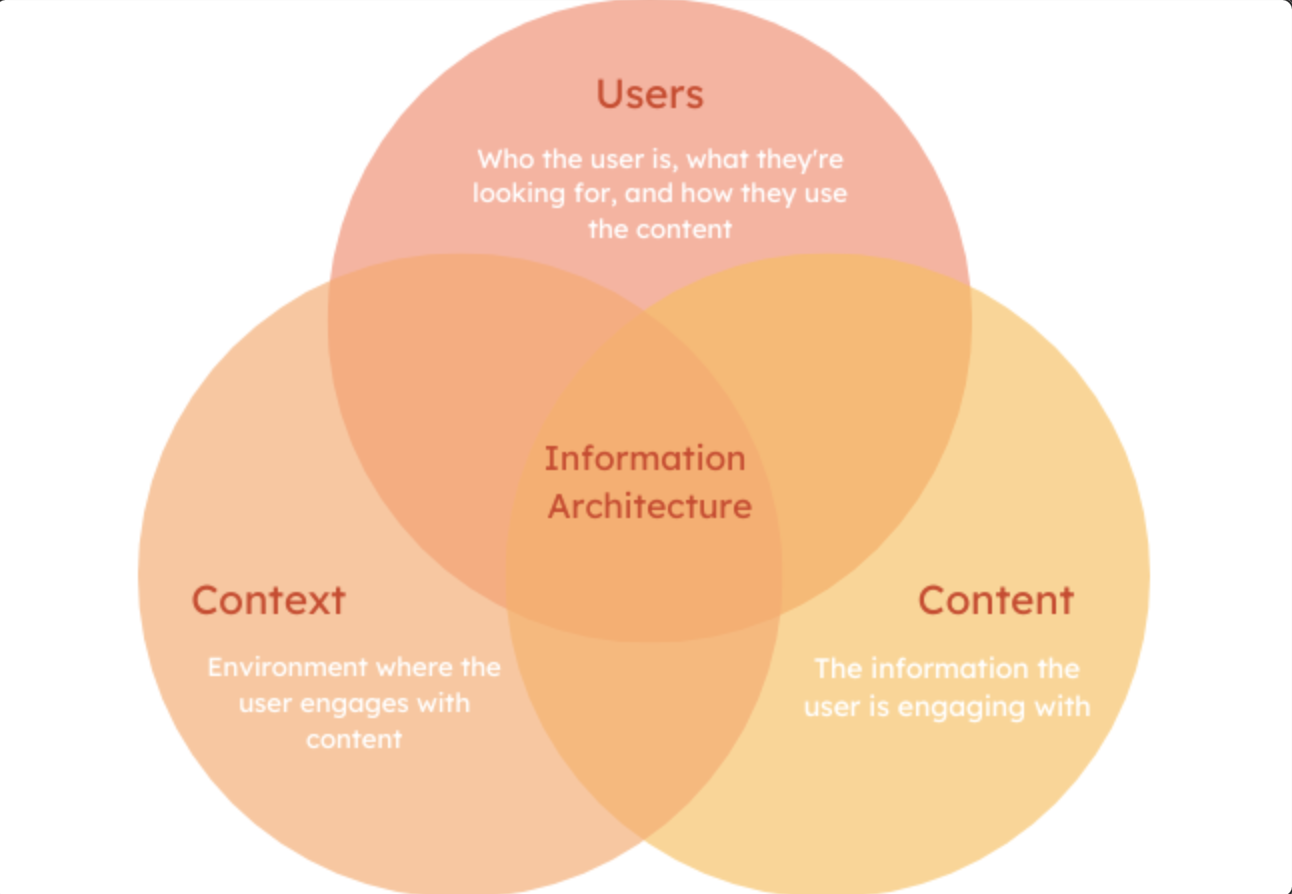
Clear Information Architecture = Better User Experience
Information architecture is also an essential part of the human-computer interface – it connects all of the information on your site so that (when done successfully) users can navigate with ease.
Providing the best user experience you can can give you SEO bonus points for ranking factors like:
- Dwell time. The better your website, the more time users spend on it.
- Bounce rate. Users are more likely to click links, complete forms, or make purchases when they can navigate your site effectively.
- Backinks. Linking to your website is like recommending it. Higher quality websites tend to get more (and better quality) backlinks.

The Cost of Poor IA
And what if you don’t invest in creating a clear, efficient information architecture? The cost of poor IA can be difficult to quantify, but according to Nielsen Norman Group common mistakes cost businesses billions of dollars each year.
Ineffective information architecture can cause websites to lose value in:
- Employee productivity. The International Data Corporation (IDC) conducted a study about this in 1999, finding that poor IA led employees to have trouble finding information, costing employers $5000 per employee – or $884.3 billion across the market. Imagine what that number looks like today.
- Conversions and reputation. Lost business is the obvious result of poor IA. If your customers can’t find where you want them to go, they can’t do what you want them to do. Sign ups, purchases, it can all suffer.
- Marketing costs. That is, spending more money trying to make up for poor organic performance.
- Support. Whether it’s live chat or on-site documentation, you’ll spend more resources on support if users can’t find what they’re looking for themselves.
- SEO. Bots won’t be able to crawl and index pages effectively.

TLDR; Your Information Architecture + Crawl Depth Checklist
Crawl depth and usability are too important to risk with poor information architecture. To make sure users and bots can navigate your site effectively, use these simple strategies to boost SEO and save plenty of time and money:
- Display more posts on your blog to shorten crawl paths
- Prioritize internal linking to/from important pages
- Leverage your website’s site map to decrease crawl depth
- Optimize page speed for more efficient crawling
Woodside Ventures: Chat with Our Technical SEO Experts
Woodside Ventures specializes in solving complex e-commerce and marketing problems across competitive industries. If your information architecture needs an overhaul, drop us a line. We’re happy to help you decrease the crawl depth of your important pages and give your SEO a permanent boost.



